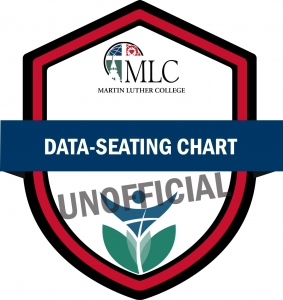MICRO-CREDENTIALS
Formal Recognition for Informal Learning
Data-Seating Chart
DESCRIPTION: Principals, directors, or instructional coaches who earn the Data-Seating Chart Micro-Credential can collect and sort data on carefully selected classroom interactions around students’ understanding and engagement using a formative classroom charting tool.
EARNING THE MICRO-CREDENTIAL: To earn the Data-Seating Chart Micro-Credential, instructional supervisors and observers demonstrate their ability to strategically capture data around student engagement and understanding. Earners record evidence on carefully selected common or repetitive classroom practices and class movements using the WELS Formative Supervision Classroom Chart Tool. Earners also reflectively sort the collected evidence. Finally, earners can articulate the differences between evidence and interpretation.
RESEARCH BASE: Studies of highly effective teachers found that regular, quality feedback was a factor in increasing teacher performance and determining how long teachers planned to stay at their schools (Allen, Pianta, Gregory, Mikami, & Lun, 2011). These results, in turn, improve student achievement by an effect size of over 0.21 on student achievement in math and reading (Archer, Cantrell, Holtzman, Joe, Tocci, & Wood, 2016; Steinberg & Sartain, 2015).
Researchers agree that when charting observation evidence it is important to focus on the facts and then to later match them to the right indicators of performance. Many popular and robust observation tools exist for this type of observation analysis (Danielson, 2007; Marzano, 2007; McRel, 2011; Pearson, 2010;). The WELS Commission on Lutheran School’s (CLS) Ministerial Growth and Evaluation Program (MGEP) also has a framework and observation tools that focus on the seven most impactful elements common to these frameworks that focus on student learning and what good teachers do. It is recommended that observers master using the MGEP framework when charting data before moving into more complex tools and frameworks.
BACKGROUND: Data-seating chart tools are typically used to capture evidence focused on students’ understanding and engagement by recording common or repetitive classroom practices, teacher’s and/or students’ movements, and objective anecdotes about what was seen and heard (Archer, et al., 2016).
Lasagabaster, D., & Sierra, J. M. (2011). Classroom observation: desirable conditions established by teachers. European Journal of Teacher Education, 34(4), 449-463.
Archer, J., Cantrell, S., Holtzman, S. L., Joe, J. N., Tocci, C. M., & Wood, J. (2016). Chapters on Collecting Evidence, Understanding Bias, and Recognizing Evidence in J. Archer (Eds.), Better feedback for better teaching: A practical guide to improving classroom observations (pp. 127-151, 159-161). John Wiley & Sons.
WELS MGEP Description of Evidence: Observational Evidence Review
WELS MGEP Observation Tools: The WELS Formative Supervision Classroom Chart Tool, MGEP Observation Tools, and an example of Formative Supervision Classroom Chart Tool with evidence
MICRO-CREDENTIAL CRITERIA: Data-Scripting micro-credential earners can . . .
- Collect focused evidence using the MGEP Formative Classroom Chart Tool.
- Sort collected evidence.
- Articulate the differences between evidence and interpretation.
SKILL DEMONSTRATION:
Submit a response
Create an infographic to distinguish evidence and interpretation. The infographic should . . .
- Distinguish evidence and interpretation.
- Provide an example of evidence.
- Provide an example of interpretation.
Submit two completed observation tools
Provide documentation of two different observations where evidence was captured. This documentation will include . . .
- Two separate WELS Formative Supervision Classroom Chart Tools with observation evidence.
- Note: Each tool should contain sorted evidence
RUBRIC:
RESOURCES:
Books
Archer, J., Cantrell, S., Holtzman, S. L., Joe, J. N., Tocci, C. M., & Wood, J. (2016). Better feedback for better teaching: A practical guide to improving classroom observations. John Wiley & Sons.
Marzano, R., & Simms, T. (2013). Coaching classroom instruction. Solution Tree Press.
Wood, J., Joe, J. N., Cantrell, S., Tocci, C. M., Holtzman, S. L., & Archer, J. (2014). Building Trust in Observations: A Blueprint for Improving Systems to Support Great Teaching. Seattle, WA: Bill & Melinda Gates Foundation.
Articles
Allen, J. P., Pianta, R. C., Gregory, A., Mikami, A. Y., & Lun, J. (2011). An interaction-based approach to enhancing secondary school instruction and student achievement. Science, 333(6045), 1034-1037. Retrieved from https://www.ncbi.nlm.nih.gov/pmc/articles/PMC3387786/
Lasagabaster, D., & Sierra, J. M. (2011). Classroom observation: desirable conditions established by teachers. European Journal of Teacher Education, 34(4), 449-463.
Steinberg, M. P., & Sartain, L. (2015). Does better observation make better teachers: New evidence from a teacher evaluation pilot in Chicago. Education Next, 15(1), 71-77. Retrieved from https://www.educationnext.org/better-observation-make-better-teachers/
Videos
Peer Review of Teaching: The classroom observation (2017).
https://www.youtube.com/watch?v=TqshQJ2SkRc
Classroom Observation Strategies: Instructional Coaching (2015).
https://www.youtube.com/watch?v=hu20BVKV61c
Weblinks for resources
Martin Luther College Course
EDU5302 Supervision of Instruction
EDU5903 Observation & Conferencing




